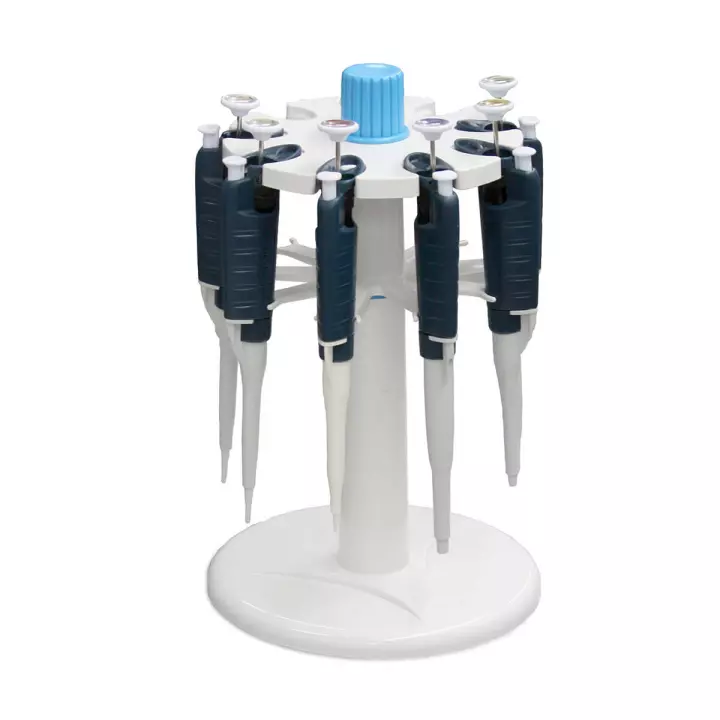Pipettes are widely used equipment in clinical and research laboratories. They are used to supply very exact amounts of fluids.
Pipettes are devices that are used to measure or transfer small volumes of liquid from one container to another, with great accuracy; They are characterized by lacking a deposit. Pipettes have a great diversity of models. Initially, they were made of glass; At present, there is a wide range of options. The fixed volume and variable volume pipettes stand out, which in general have mechanical controls. Pipettes that have electronic type controls have also recently been introduced to the market.
The mechanical or piston pipette generally works by transmitting the force that an operator, manually, exerts on a piston that is attached to a piston by means of an axis that moves it along a cylinder of fixed length, forcing a predefined volume of liquid out of the pipette.
What is required to use automatic pipettes?
To use a pipette the laboratory is required to provide adequate conditions of comfort, cleanliness and lighting. The general conditions are as follows:
- Verify that the temperature of the environment where it is used is stable, with a variation range of ± 0.5 ° C, that is between 15 ° C and 30 ° C, with a temperature of 20 ° C being optimal.
- Confirm that the relative humidity of the environment is greater than 50%. The pipettes and samples or materials with which you work should be stabilized to the laboratory conditions, so it is recommended that they be in it with two or three hours in advance at the time the work is performed.
- Avoid working with pipettes under the influence of direct sunlight. 4. Use the appropriate protection elements, if working with toxic materials or those with biological risk.
What mistakes do we frequently make when pipetting?
- Do not assess the viscosity of the sample.
- Dispense liquid reagents too quickly
- Pipette different samples with the same tip.
- Not perform proper maintenance of the pipettes
- Do not calibrate the pipettes within the established deadlines.
- Pipette from an incorrect angle
- Store pipettes horizontally
- Do not use the appropriate tips
- Do not take into account the ambient temperature and / or the temperature of the sample.
What rules should you follow to pipette correctly?
To obtain exact, precise and above all reliable results, pipette operators need to know in detail the procedures related to their use. This is achieved through training and detailed monitoring of the use of pipettes.
Below we summarize several steps that you must follow in order to achieve a good measurement:
- Pipette slowly and gently.
- Keep the pipette in an upright position when aspirating the sample.
- Dip the tip slightly into the sample when aspirating.
- Dispense the liquid on the side wall or on the liquid at an angle of 45º.
What should the maintenance routine of automatic pipettes?
Pipettes are devices that require frequent inspections to detect abnormal wear or damage and / or verify that they are in good working condition. The inspection should cover the following aspects:
- Verify the integrity and adjustment of the mechanisms. They should be able to move smoothly. The piston should move smoothly.
- Confirm that the sharpener does not show distortions or wear marks, since it is essential for the accuracy of the measurements. Check the adjustment of the tips.
- Place a tip and fill it with distilled water. The pipette must not present any type of leak.
Kalstein puts at your disposal automatic pipettes of the highest quality that will allow you to obtain a better measurement for a good analysis. That’s why we invite you to take a look at our available micropipettes HERE


